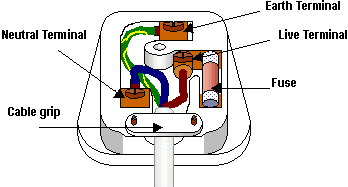Actually "Live" is normally often used here in the UK...
E.g.

Yeah, you'll find a lot of such examples.
Because something is a common mistake doesn't make it right; quite the opposite, it's even stronger reason to spend effort trying to set the record straight. This is safety critical terminology mistake. And terminology is important because that connects to our
thinking, which affects our
assumptions.
It's a common misassumption that neutral is "safe" because it's not "live", and this only originates from people accidentally labeling the other wire "live". This false assumption kills people, because li
ne and neutral are often swapped, either completely legally in nonpolarized plugs, or due to fairly usual installation mistakes. So both wires
need to be considered
live regardless of color or label; if you don't, you are taking a serious risk up to 50% in case of nonpolarized plugs.
That's also the reason why PE is made so different; color is nowadays a special two-color mix which makes us pay special attention; the prong(s) in the plug is/are located in such way they stand out and swapping PE with anything else is visually obvious. Yet even with these precautions, swapping PE with either of the live wires does happen and people die as a result. It's just that swapping line and neutral is like 100 or 1000 times more common.
It's line and neutral.
surely you mean phase and neutral
Depending on country, yes. "Phase and neutral" or "Line and neutral". Line is a crappy word because it's too easy to mix with live, I'd prefer "phase" everywhere. In three-phase systems, L1, L2, L3 refer to three
lines. On the other hand,
phases are often called U,V,W. Same thing, different names.